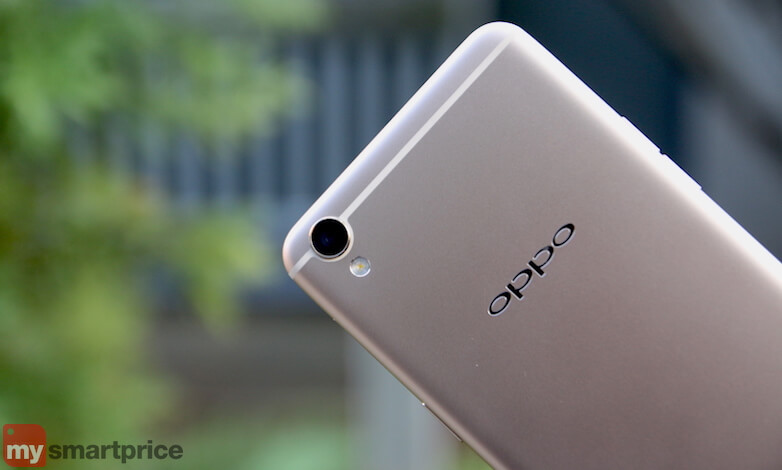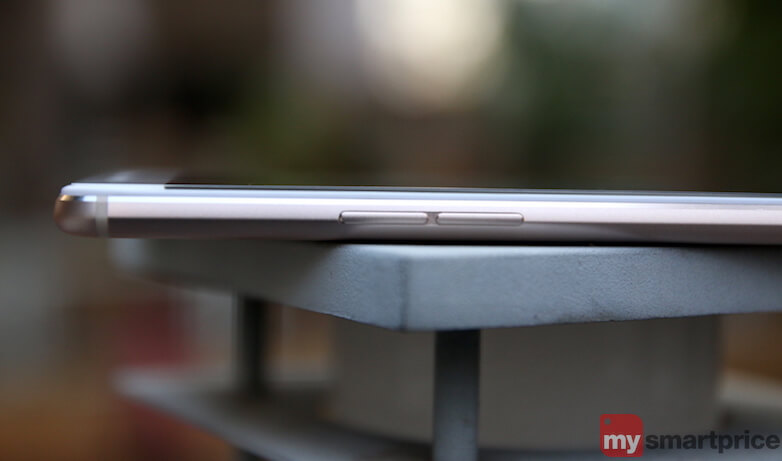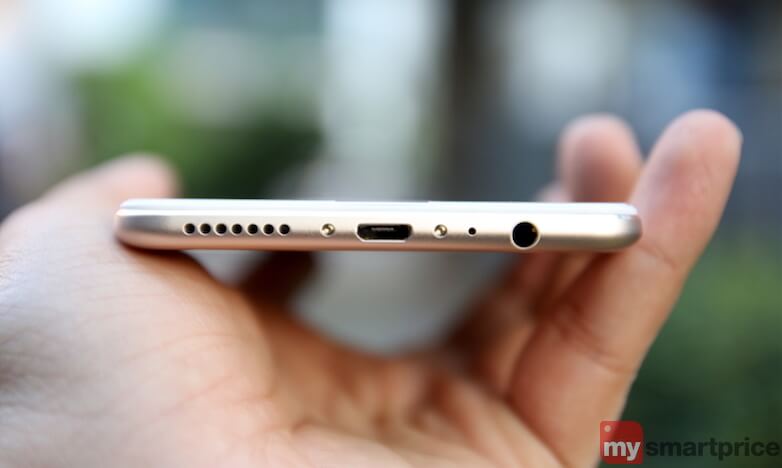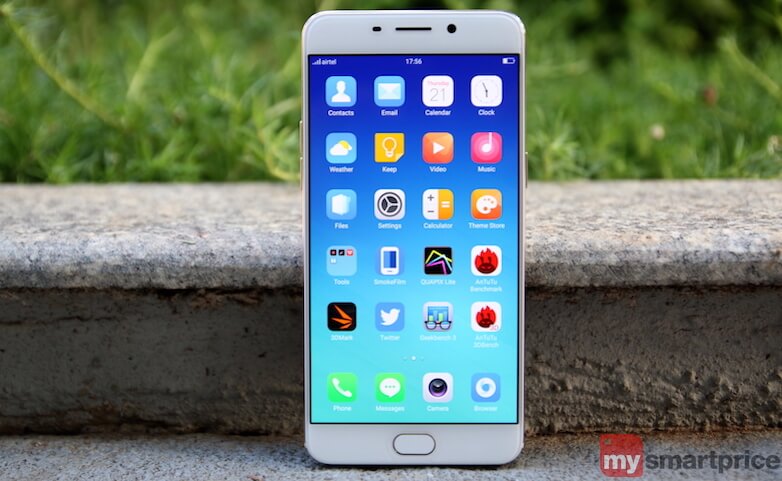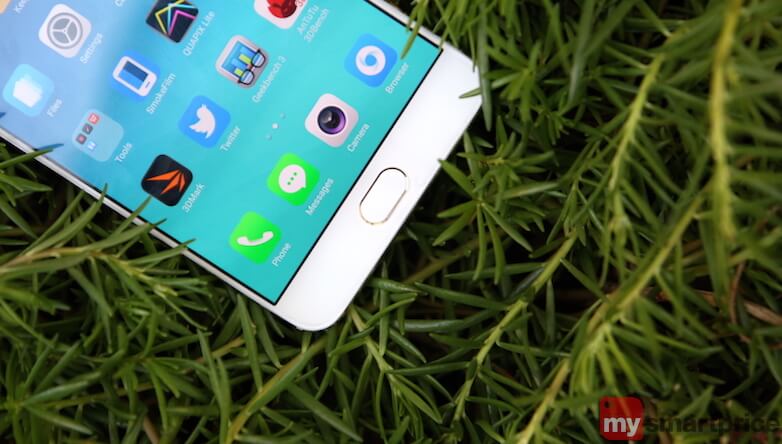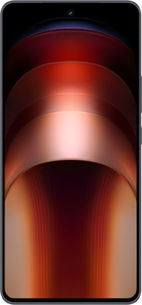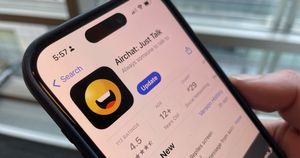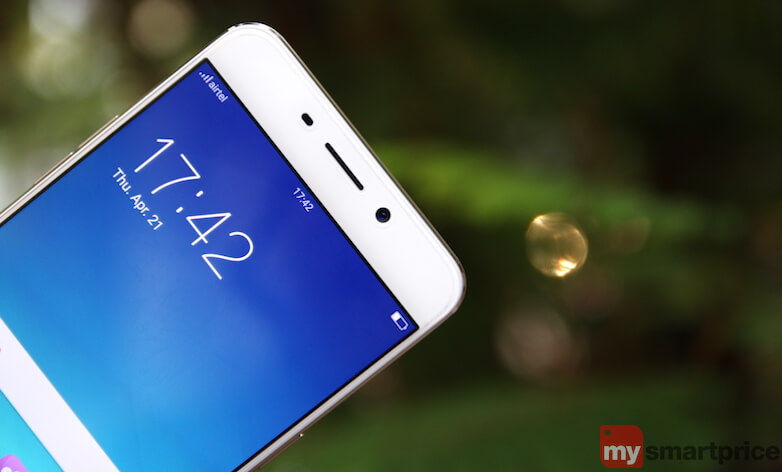
Smartphone makers are in a bid to cash in on the selfie-craze by trying out every possible method in the book. Apart from the dime-a-dozen selfie-taking apps that have stormed the market, these manufacturers are realising the growing potential of the niche market for selfie-centric smartphones. Back in 2013, the Oppo N3 that came with a swivel camera and dual-LED flash impressed many. On the heels of this device, the company introduced a mid-range device, the Oppo F1 in India just earlier this year.
Oppo further decided to step-up the F1 and introduced the new Oppo F1 Plus at a price of Rs.26,990 in India. The F1 Plus seems to be heavily inspired by the Apple iPhone 6s Plus. Despite the similarities, the company boasts of a 16-megapixel camera at the front, a new Beautify 4.0 version for tweaking selfies and a VOOC fast charging mechanism in this phone. On paper, these features are good enough to attract the attention of all the young and selfie-loving folks out there.
We got our hands on an F1 Plus and put it to test. Here are our thoughts on the same.
Stylish, Premium and quite familiar design
The Oppo F1 Plus unmistakably resembles the iPhone 6, save for the relatively flat home button and chamfered edges. Thanks to the unibody chassis made from the 6000-series grade aluminium, the F1 Plus looks rather premium.
The device is quite slim at a thickness of 6.6mm, and despite a length of 151.8mm, it is comfortable to use with one hand. The narrow bezels create the illusion of an edge-to-edge display. The device weighs 145g. The F1 Plus is lighter and slimmer than its rival, the Galaxy A7 (2016) which weighs 172g and measures 7.3mm.
The power/sleep button rests on the right edge, above which is the Dual-SIM slot. On the left edge are the volume rocker keys. The home button also doubles up as an integrated fingerprint scanner and has a layer of ceramic on top of it for quick and accurate fingerprint recognition. The backlit capacitive keys are present below the display.
The 16-megapixel front camera rests at the top along with the earpiece and a white notification LED. At the back is a slightly raised 13-megapixel camera with an LED flash just below it. A speaker grille, a Micro-USB port and an audio port rest at the bottom edge.
Despite the anodized aluminium back, the F1 Plus is a bit slippery. Oppo bundles a crystal case in the box which you can use to protect the phone. Design-wise, simply put, the phone appeals aesthetically, and pleases ergonomically.
Good display for outdoors yet isn’t splashproof
The F1 Plus has a 5.5-inch display which offers a resolution of 1080p and a pixel density of 401 PPI, as a result of which, images and text appear crisp. The AMOLED panel is quite bright and reproduce vibrant colours.
The colour temperature of the display, though, is on the colder side and when you tilt the phone at the front, a faint bluish tinge on the screen is visible. Corning Gorilla Glass 4 protects the display from scratches.
The display can be used under direct sunlight, but only after increasing the brightness level to the maximum. In comparison, the Galaxy A7’s Super AMOLED display which has the same screen size and resolution, offers better legibility under direct sunlight and decent colour saturation.
A SmokeFilter app on the phone lets you customise the screen temperature to your liking. However, you might have to play around with the numbers first before you get an idea about the best one to suit your eyes.
Another detail about the display which needs mention is that it is quite sensitive to touch, which makes the device usable even when you’re wearing gloves or have damp fingers. This solves the common issue of struggling to use the phone at the pool, beach or any such outdoor locations. However, the display isn’t splash-proof or water-resistant.
Packs enough muscle to punch
Oppo has packed the F1 Plus with an octa-core MediaTek P10 (MT6755) chipset. This octa-core chipset has all cores clocked at 2.0GHz and is faster when compared to the Galaxy A7’s Exynos 7890 Octa that has all of its eight cores clocked at 1.6GHz.
Oppo packs 4GB of RAM and 64GB of internal storage space which certainly trumps the Galaxy A7 with its 3GB of RAM and 16GB of internal storage space. Both phones have an expandable storage of up to 128GB. Either ways, the Oppo F1 Plus clearly has an upper hand when it comes to the hardware specifications.
This Dual-SIM phone can hold two Nano-SIM cards, the first of which can hold one 4G SIM card and latch on to either of the two Indian 4G LTE bands – Band 3 and Band 40, whereas the second slot automatically connects to a 2G network.
Faster downloads can be enjoyed with the help of the dual-band Wi-Fi 802.11 a/b/g/n and faster file transfers can be had with Bluetooth 4.0. You can also use an OTG cable to connect to a USB drive and use it as an external storage space.
At the front is a 16-megapixel camera with an F2.0 aperture for taking wide-angle selfies, and at the back is a 13-megapixel camera with an F2.2 aperture with an LED flash.
With regard to hardware specifications, the F1 Plus ticks off all the boxes of a powerhouse mid-range device, and stands as a strong competitors to the Galaxy A7.
A clean, neat user interface
The F1 boots ColorOS v3.0 stacked on top of Android 5.1 Lollipop. The UI has no app drawer and you’d be pleased to know that there is no bloatware on this device, either. ColorOS feels smooth and offers the least-lag experience that we’ve seen on a UI in a while.
In the Notification menu, the notification stack shows up by default. You can swipe left to access the Quick Settings toggles, but do note that the options in the Quick Settings menu can’t be customised. What you can customise, however, are the notifications and you can choose to make them appear as banners on the lock screen or simply have them in the notification tray.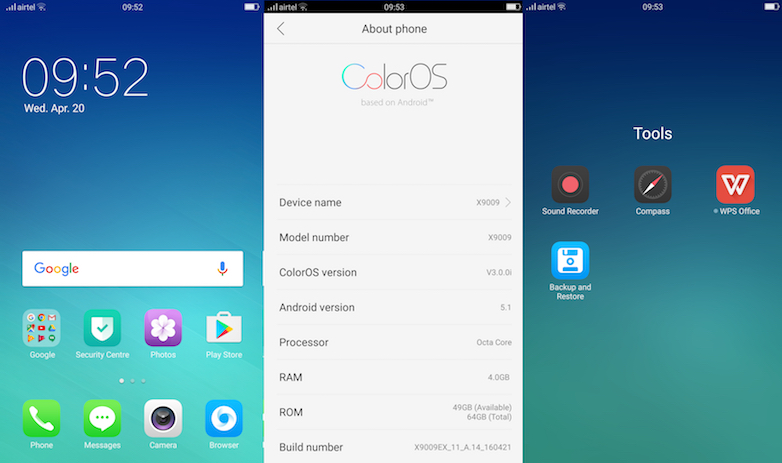
The Settings app allows you to customise the native apps, just as iOS does. With the SmokeFilm app, you can customise the colour temperature of the screen. The app has a couple of presets that you can choose from to get the desired temperature. We found having a default app for choosing the temperature to be quite odd, since on most phones, this option is simply accessed from the display settings menu.
The UI also has a few useful features. The File Safe option from the Files Manager allows you to secure your files. The default browser is powered by Opera and integrates data saving settings. The Photos app packs image editing tools and filters, so you won’t need any other app to tweak your photos.
The fingerprint scanner on this device is surprisingly impressive. We moved our thumb around in all directions while setting it up and no matter in which direction we placed our thumb, the phone unlocked instantly. This is one of the fastest fingerprint scanners that we’ve come across so far.
While, overall, ColorOS is quite smooth and consistent, it does come with several rough edges.
With love for the selfie experts
Dubbed the ‘selfie expert’, the F1 Plus has a 16-megapixel camera at the front for taking quality selfies. However, we noticed that the selfies had a certain kind of softness to them, while also packing decent details at the same time. However, the front camera struggles in taking decent images indoors and in low-light conditions. Selfies lack details and sharpness when taken in low light.
The upgraded Beautify option now offers a variety of levels for choosing your skin tone, from fair to pinkish. Play around with the Beauty mode to smoothen your skin tone as well as remove any wrinkles or blemishes. If you are with a large group of people, you can use Panorama.
The app also comes with a host of options such as Expert Mode, Double-Exposure, Ultra-HD and GIF Animation apart from the different filters available. The Expert Mode offers more manual control over options such as white balance, ISO levels, shutter speed, focus and also allows you to save images in RAW format.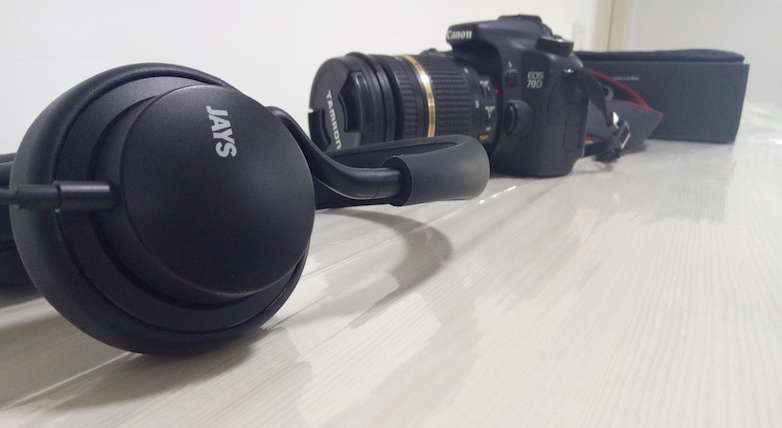
The phase-detect Autofocus is a bit slow, but then again, this is no DSLR camera, so that can be forgiven. Images captured by the 13-megapixel rear camera appear heavily saturated on the phone, but when you view them on a desktop, they show good colour and white balance. Images shot indoors, despite the ample amount of light, tend to have noise and aren’t sharp. Unfortunately, there is no Optical Image Stabilisation feature and therefore, images taken in low light are badly affected. The camera app, in our honest opinion, could use some tweaks and polish.
Enjoy the music
The Music app recognises .ogg and .mp3 files, but most of our FLACs were not detected by the player. The Dirac HD Sound enhancement kicks in only when the headphone is plugged in and it offers fairly average audio output. The speaker, on the other hand, does a decent job in providing balanced sound, but it isn’t as loud or clear as on other stereo speakers.
The Video app was able to run our stock 1080p videos without any issues, but couldn’t play the 4K file at all. When we tried running it with VLC Player, the 4K file struggled to play.
In short, the device plays only high-bitrate mp3 files and 1080p videos on the phone easily. This is disappointing as most other phones in this price point support FLAC files and are capable of playing 4K videos smoothy.
Yet another average performer
What really impressed us about the F1 Plus was that it does not heat up even a bit while gaming or taking pictures. In terms of call quality, the earpiece is loud, but the microphone at the bottom does capture some amount of ambient noise.
The Helio P10 treats all kinds of apps equally, what this essentially means is that, we faced no kind of stutter of lag while using the apps. Even games such as Asphalt 8:Airborne and Modern Combat 5 were able to run without any trouble, but at moderate graphics settings.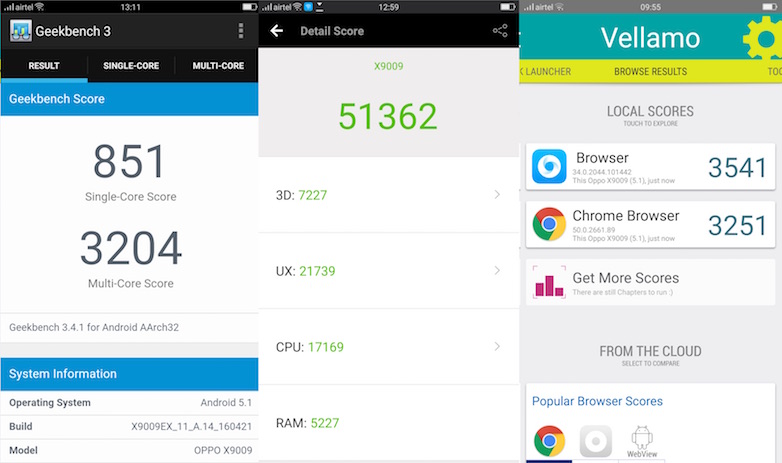
The F1 Plus scored 51,362 points in the AnTuTu Benchmark. In the 3DMark Benchmark test, the phone scored 340 points with the Sling Shot ES 3.1, and 6,779 points in the Ice Storm Extreme. In the Geekbench 3 benchmark test, the phone scored 851 points for single-core and 3,204 points for multi-core performance.
In a nutshell, the F1 Plus delivers smooth performance.
Reliable battery life for the shutterbugs
Oppo has packed a 2,850mAh battery in the F1 Plus, and comes with its proprietary VOOC fast charging mechanism as well. Thanks to that, the phone takes about an hour and 10 minutes to charge fully from zero to 100. Unlike many other phones in this price range which tend to heat up while charging, the phone doesn’t get warm, which is a good thing.
During our time with the device, our standard usage involved making voice calls for about 40 minutes, using two synced Gmail accounts, gaming for about 20 minutes, listening to music as well as watching YouTube videos for about half an hour, and using social media apps throughout the day. With such kind of use, the phone still had some juice left by the end of the day and was able to run through the night in the Low Power mode.
You can rely on the F1 Plus’ battery to last you through your day. Carrying the VOOC adapter with cable along with you would only help you juice up the phone quicker, if and when such a situation arises.
Final Words
At a price of Rs.26,990, the Oppo F1 competes with the Samsung Galaxy A7 (2016). When compared, the F1 Plus is a slimmer, lighter, equally powerful device which offers smooth performance but with a few rough edges. Against such a profile, the Galaxy A7 (2016) competes closely, but surges ahead thanks to its massive 3,300mAh battery life.
The fingerprint scanner on the F1 Plus amazed us with its speed and recognition accuracy. The camera app, on the other hand, requires some more polish to be able to give impressive results. While the audio and video departments have limited options for entertainment, the battery life is what takes the cake. ColorOS too could use some refinement and UI tweaks. Casual gamers and those not fussy about the sound quality shouldn’t mind the moderate-level graphics and the mediocre speakers. That said, Oppo’s F1 Plus is the most premium and stylish-looking selfie-phone in the mid-range slot currently.
